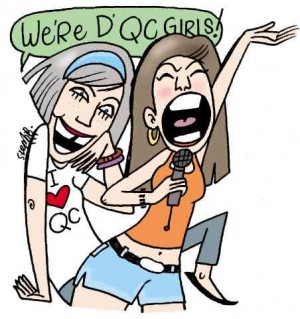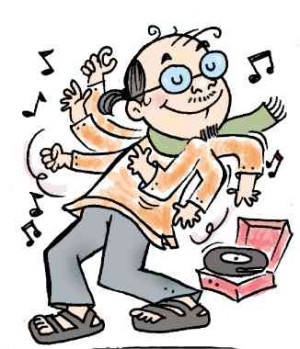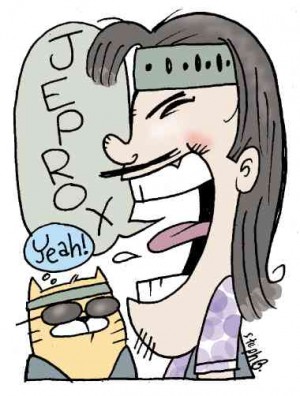 I’ve lived in Quezon City for more than 30 years, but I’ve never considered it my home-town.
I’ve lived in Quezon City for more than 30 years, but I’ve never considered it my home-town.
I spent my formative years in Pasig and Marikina, when both were still backwater municipalities of Rizal, relatively insulated from the urban sprawl that was fast infecting what used to be known as the Greater Manila Area.
In any case, I never considered residents of Quezon City as having a distinct culture, the way I thought Pasigueños and Marikeños did. The former were easily identifiable from the latter by their punto (accent) and also by their general attitudes.
Typical Pasigueños—or so I thought—tended to be foulmouthed, gruff, streetwise. In comparison Marikeños were mellower, more affable, and less inclined to say “p—ng ina” three or four times in every sentence.
In contrast, Quezon City was a melting pot, a city of migrants with few true natives outside ancient neighborhoods in Novaliches and Diliman.
Most QC residents had moved there from somewhere else: Well-off Manileños fled postwar destruction and the urban decay of the inner city and moved to New Manila and newfangled subdivisions like Philamlife Homes; Filipino-Chinese spilled over from crowded Binondo and opened businesses on Banawe Street; poor huddled masses yearning to breathe free poured in from every corner of Luzon, Visayas and Mindanao to settle in the QC’s housing projects.
Subsequent cataclysmic events brought new waves of migration: the war in Mindanao; the collapse of Negros’ sugar economy; the eruption of Mt. Pinatubo.
Each new group brought its own distinct culture to QC’s new neighborhoods. But all aspired to something better.
1949 master plan
 President Manuel L. Quezon had envisioned “a city with a Filipino soul” when he decided to build the city that would eventually bear his name. The 1949 Master Plan saw the new capital as “a real Filipino metropolis… the showplace of the nation…”
President Manuel L. Quezon had envisioned “a city with a Filipino soul” when he decided to build the city that would eventually bear his name. The 1949 Master Plan saw the new capital as “a real Filipino metropolis… the showplace of the nation…”
What the city fathers got was a home for the emerging Filipino middle class, with solid Filipino middle-class values.
It wasn’t until the late 1990s that I began examining the idea of a distinct culture and lifestyle peculiar to QC.
It was in a tiny café on Nakpil Street, back when Malate was the epicenter of a new bohemia then emerging from electronic music, club couture and the resurgence of psychedelic experimentation brought on by the availability of MDMA, better known as Ecstasy.
Over the background noise of techno being spun by the house DJ, I overheard one of the club’s painfully hip denizens say, “I wouldn’t be caught dead in Quezon City!”
I knew exactly what she meant.
Then, as now, QC was Squaresville.
That year they were spinning House and Drum and Bass in tiny underground clubs in Malate and Makati while ravers off their heads on E and Special K drooled on the dance floor.
Meanwhile, back in QC, aging hippies in batik and Mojo sandals and NGO types festooned with beads and pashminas skanked to a Bob Marley cover band before returning to their sisig and beer.
OK, it’s a bit exaggerated but you get the picture.
Ironically, once cutting-edge Malate is now dead as the dodo, while middle-of-the-road Quezon City—still as unhip as ever—has not only endured, but thrived.
Quezon City’s defining ethos was at heart populist, an attitude characterized by tolerance and inclusiveness.
In 2008, the all-female indie rock band Duster released “QC Girls,” a breathless rush of pure pop whose chorus fearlessly declared: “We are the QC, we are the QC, we are the Quezon City girls!”
The lyrics suggested that QC girls were equally at home at the tattoo parlor as they were at the beauty parlor.
It was a bold statement of identity, an unabashed mash note to the place the girls considered home, as well as an oblique rejoinder to Put3Ska’s “Manila Girl,” Andrew E.’s “Alabang Girls,” and previous pop statements of civic identity.
It was also my first inkling that QC—or “Kyusi” as netizens were beginning to spell it—culture had arrived.
But what, exactly, does it mean to be Kyusi?
“For me, being a QC girl was about having a blast and being resourceful,” says Duster’s Katwo Puertollano, the song’s author and one-time QC resident.
“Madalas, mababaw ang kaligayahan—and I say this with absolute pride. I think we’re more resourceful (because all the ‘cool’ spots were in Makati or Ortigas), so we learn to have fun with what we have and this makes us a bit more creative and adventurous than the average Metro Manila girl.”
The Net is where most trends now begin, and bloggers around the same time started writing about “Kyusi,” as in Kyusi street fashion or good places to eat in Kyusi, or where to find live music in Kyusi. A “Kyusi-pedia” aspired to become the definitive guide to QC life. Even city hall got into the act with the slogan: “Sa Kyusi lahat panalo” to highlight its socioeconomic doctrine of “inclusive growth.”
Spirit of place
More than just a change of spelling, the transition from QC to “Kyusi” pointed to a recognition that Quezon City possessed a distinct character, an identifiable spirit of place, a shared set of attitudes, values and outlooks among the inhabitants—in short, a culture—that made it different from Manila or Makati or other cities in the metropolis.
More recently, humorist Stanley Chi published “Men Are From QC, Women Are From Alabang,” a book purporting to be a guide to understanding the opposite sex, whose title implies, but doesn’t really describe, an identifiable “QC” character.
Duster’s Puertollano offers even deeper insights into what makes Quezon City distinct:
“I read somewhere that Quezon City has the biggest high school population in the whole Philippines, and it’s probably due to the size of the population of the city. Combine this density of youth with having liberal learning institutions like the UP and Ateneo campuses and QC becomes a fertile ground for young people to learn, experiment and form friendships. QC becomes, by design or coincidence, the first location where young people converge to challenge themselves (as education broadens people’s minds), tinker with creativity and assert their independence. This convergence forms communities, strengthening artistic resolve and creating conversations that validate a young person’s passions and goals.
“In my view I find QC to be intellectually forward but socially conservative and religious. So we have this beautiful tension of traditional conservative culture and youthful, liberal academic awareness. As new ideas form, they iterate quickly to stand up to more conservative perspectives and I think subcultures, activism, writers, musicians, artists emerge because of this tension and cycle. I’d like to consider that (achievement-oriented) QC girls tend to be very sharp and humorous, because of the abundance of both academic challenges and the improvisational spirit that people with mababaw na kaligayahan have because of this frenetic energy… Basically what I’m saying is that, coming from QC, we’re gifted with youth and what it holds—assuming we recognize the value in that.”
Quezon City has always been a city for the young.
The student activism of the early ’70s found its arena in the streets of Manila, but its values and ideals were incubated in the relatively sheltered groves of Diliman.
The etymology of the term jeprox remains in dispute to this day, but the explanation that has gained most credence is that it is Filipino reverse slang for “projects.” Attributed by some to the late Edmond Fortuno, jeprox gained national currency thanks to Mike Hanopol’s 1977 hit song “Laki sa Layaw,” which described the free-living, hard-drinking quasi-hippies that had started to become visible around the Quezon City housing projects. (These areas were also referenced in the Juan de la Cruz Band song “Project.”)
Even before Hanopol gave them their name, however, the youth who would be jeprox had found a convivial gathering place in Cubao, where Farmer’s Plaza offered diversion in the form of record stores, clothing boutiques and “head” shops selling such lifestyle accessories as strawberry incense, black light posters and sweet rolling paper.
 Perhaps less savory were the notorious neighborhoods, such as Mariposa Street, where one could “score” items that could not be sold openly in established retail outlets.
Perhaps less savory were the notorious neighborhoods, such as Mariposa Street, where one could “score” items that could not be sold openly in established retail outlets.
More than a decade before “QC Girls,” another Quezon City band—a bunch of UP Diliman dorm kids who called themselves the Eraserheads, launched a cultural revolution from a handful of tiny QC clubs on Timog Avenue and Anonas Street in the early 1990s. Red Rocks (later renamed Club Dredd) and the ’70s Bistro were hole-in-the-wall clubs for a motley assemblage of students, punks, NGO workers, musicians and other “artistic” types.
The QC club circuit provided a nurturing environment in which their art flourished, encouraging other struggling artists to take the stage.
Within a year or so, the “alternative music” phenomenon had snowballed into a national movement, forcing the mainstream music industry to take notice.
And the cycle continues to this day: Bohemia is a moveable feast, wherever two or three are gathered in the name of artistic freedom and creative license.
These days it has set up shop in, of all places, Cubao, right where the old Marikina Shoe Expo used to be. “Cubao X” is a huddle of cafés, bars and shops that is shaping up to be the latest power spot for Kyusi culture.
As Edward Glaeser wrote in “Triumph of the City”: “No matter how mundane a city’s origins, urban concentrations can have magical consequences… Cities enable the collaboration that makes humanity shine most brightly.”









































